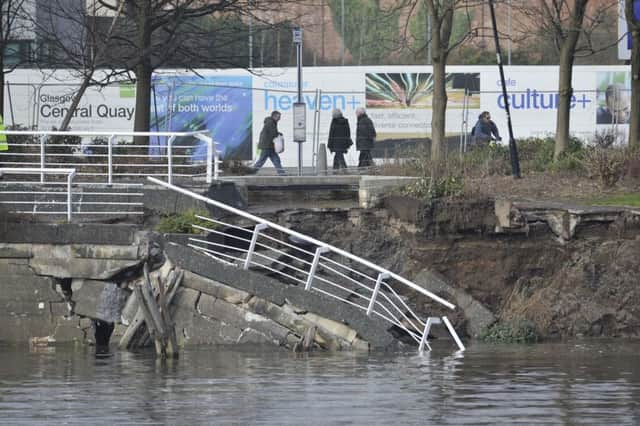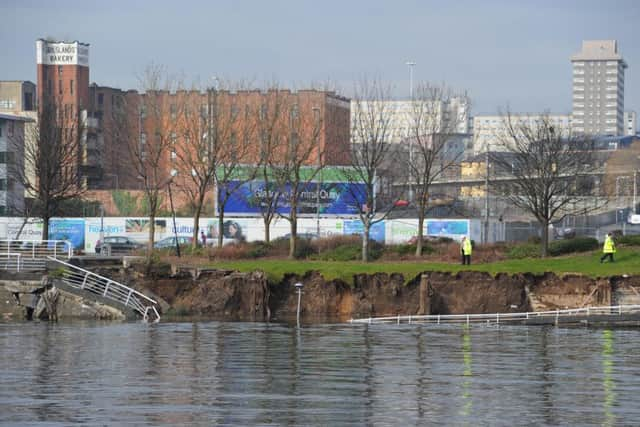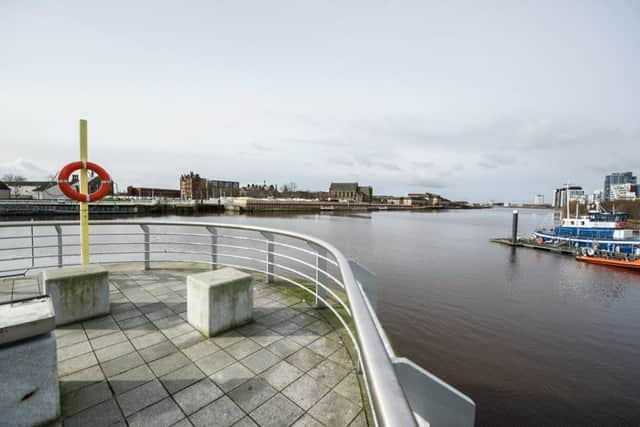Glasgow pledges £50m to fix crumbling Clyde quay walls


The City Deal-funded works will focus on a stretch of river from the Albert Bridge at Glasgow Green to the location of the proposed Govan-Partick footbridge in the west of the city.
Engineers believe that while around one-third of the 3,400m of council-owned quay walls are in sound condition, the remaining two-thirds require varying degrees of refurbishment.
Advertisement
Hide AdAdvertisement
Hide AdThe council admits that a lack of investment in the quay walls is seen as “a significant barrier” to the Clyde’s regeneration. It is hoped a series of improvements to the existing riverside walkways will encourage more pedestrians and cyclists to use the river as a means of connecting the west end, home of the University of Glasgow and Riverside Museum, and the city centre.


The Upper Clyde was transformed from a shallow river throughout the 19th century to accommodate the city’s rapidly expanding harbour and shipbuilding industries. It was progressively widened and deepened to allow ships to reach in heart of the city, with massive docks built to handle the imports and exports of Clydeside factories.
But once commercial shipping effectively ceased on the Upper Clyde in the late 1970s due to the onset of containerisation and the closure of numerous piers, much of the city’s dockside infrastructure was left to rot.
While significant investment has taken place along the river since - including the opening of the Riverside Museum and the Scottish Exhibition Campus - councillors hope the new strategy will unlock further commercial and housing opportunities.
Attractions on the banks of the Clyde bring more than six million visitors to the city every year. New developments - such as the new Riverside Distillery due top open at the former Queen’s Dock - will increase that number further.


Councillor Kenny McLean, convener for neighbourhoods, housing and public realm at Glasgow City Council, said: “The full regeneration of the Clyde is key to Glasgow’s future economic success, and today’s decision marks another step towards achieving this goal.
“The banks of the Clyde offer a fantastic location for people to live, work and visit, as well as a resource that can be used to make the communities of Glasgow better connected.”
There have been several incidents in recent years in which large sections of the quayside has either collapsed or required emergency retention works.
Advertisement
Hide AdAdvertisement
Hide AdIn 2013, a stretch of the walkway at the Broomielaw, close to the Kingston Bridge, collapsed into the river. The following year a public garden at Windmillcroft Quay on the south bank of the Clyde was closed due to fears the quay was on the verge of disintegrating. More than £130,000 of interim repair work has since been carried out, but one assessment suggested it could as much as £5m to fully repair the site.